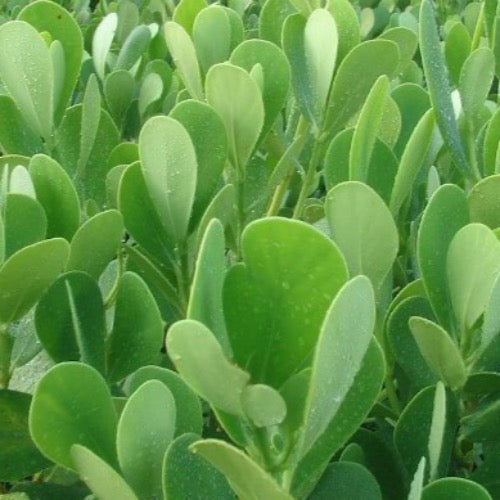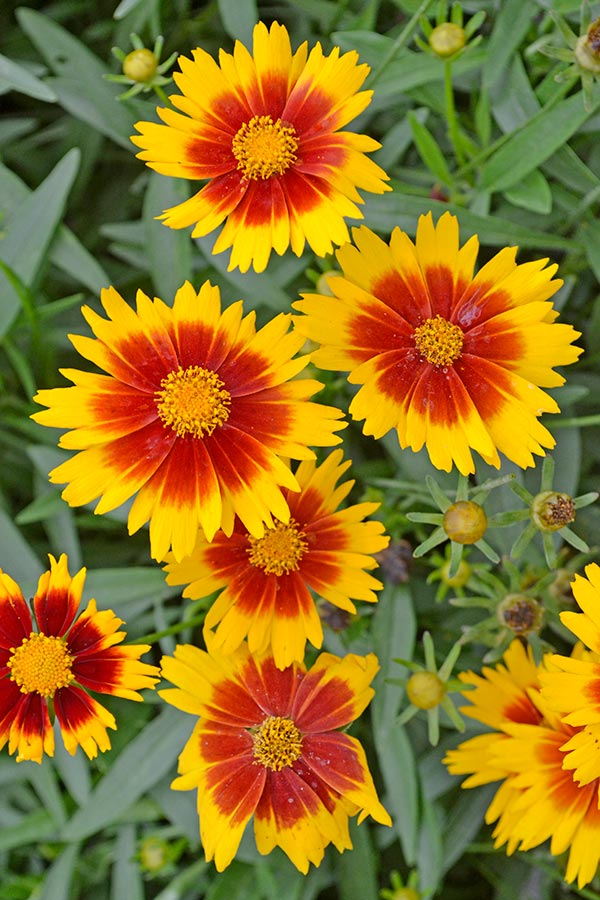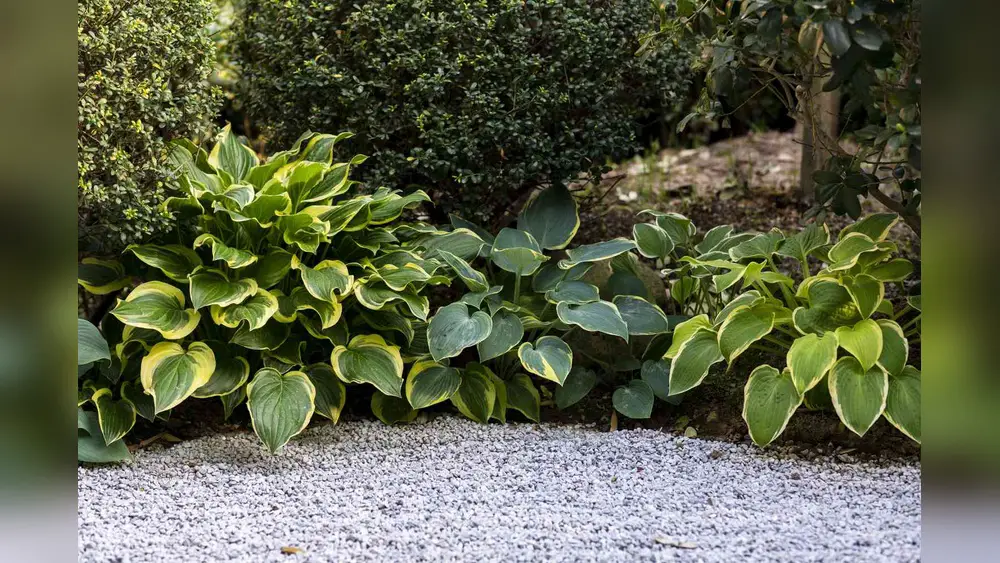If you’re looking to enhance your Florida garden with beautiful, low-maintenance border plants, you’ve come to the right place. Choosing the best low border plants for Florida isn’t just about picking pretty flowers—it’s about finding plants that thrive in the heat, resist pests, and stay attractive all year round.
Whether you want to define your garden edges or add a lush, green touch to your outdoor space, the right plants can make all the difference. Keep reading to discover the top low border plants that will transform your garden effortlessly and keep it looking stunning season after season.
Your perfect Florida garden starts here!
Top Low Border Plants For Florida Gardens
Choosing the right low border plants can enhance any Florida garden. These plants define edges and add texture without blocking views. Low border plants suit Florida’s warm climate and varied soils perfectly. They help keep gardens neat and vibrant year-round. Here are some top low border plant options ideal for Florida gardens.
Native Ground Covers
Native ground covers thrive in Florida’s soil and weather. They need less water and care than exotic plants. Examples include Creeping Juniper and Beach Sunflower. These plants spread quickly and prevent soil erosion. They also support local wildlife like butterflies and bees.
Flowering Perennials
Flowering perennials bring color and life to garden borders. Plants like Blanket Flower and Firebush bloom for months. They attract hummingbirds and pollinators to the garden. These perennials handle Florida heat and occasional drought well. Their vibrant flowers brighten borders without growing tall.
Evergreen Shrubs
Evergreen shrubs keep garden borders green all year. Dwarf Yaupon Holly and Indian Hawthorn are popular choices. They provide structure and privacy while staying low. These shrubs tolerate Florida’s sun and occasional storms. Their dense leaves create a clean, polished look along walkways or beds.
Drought-tolerant Options
Drought-tolerant plants save water and stay healthy in dry spells. Lantana and Society Garlic fit well in Florida gardens. They resist heat and recover quickly after dry periods. These plants require little maintenance and reduce watering needs. Their tough nature makes them perfect for low borders in sunny spots.

Credit: plantittampabay.com
Design Tips Using The Rule Of Three
The rule of three is a simple yet powerful design tip for Florida gardens. Grouping low border plants in threes creates balance and visual appeal. This method helps avoid clutter and keeps the space feeling natural. The eye moves smoothly across the garden, enjoying the variation without feeling overwhelmed. Using this tip can make your border plants stand out and bring harmony to your landscape.
Combining Heights And Textures
Choose three plants with different heights to add layers. For example, pair a low ground cover with a medium shrub and a taller grass. Mix textures like soft leaves, spiky foliage, and broad petals. This contrast keeps the border lively and inviting. Each plant has room to shine without crowding the others. The rule of three helps balance these elements for a neat look.
Color Coordination Ideas
Select three colors that work well together for your border. Use one main color and two accent shades. Soft greens, bright yellows, and deep purples can create a fresh palette. Keep colors balanced by repeating them in each group of three. This creates unity and guides the eye along the garden border. Color coordination makes your plants feel connected and pleasing.
Creating Visual Focal Points
Group three plants to form a natural focal point. Place this trio where the eye first lands in your garden. Use a unique plant or one with bold flowers in the center. Flank it with two smaller, subtler plants. This draws attention to that spot and highlights the plants’ beauty. The rule of three helps create clear, simple focal points without overcrowding.
Low Maintenance Choices For Florida Climate
Choosing low maintenance plants suits Florida’s hot and humid climate well. These plants need less care, saving time and water. They handle the heat, pests, and dry spells better than others.
Picking the right plants can make your garden look great year-round. Let’s explore some low maintenance options that thrive in Florida’s unique environment.
Plants That Thrive In Heat
Florida’s sun can be intense and relentless. Plants like Lantana and Blanket Flower flourish under strong sunlight. They require little shade and stay vibrant in the heat. These plants keep your garden colorful without extra effort.
Another great choice is the Firecracker Plant. It grows well in full sun and blooms brightly. These heat-loving plants reduce the need for constant watering or shade structures.
Water-efficient Species
Water conservation matters in Florida’s dry seasons. Succulents like Agave and Aloe Vera store water in their leaves. They survive long dry spells with minimal watering. These species help save water and keep the garden healthy.
Coontie is a native plant that needs little water once established. It adds a tropical touch and stays green through droughts. Choosing these water-wise plants lowers your garden’s water use.
Pest-resistant Varieties
Pests can damage plants and increase maintenance needs. Plants like Rosemary and Salvia repel many common insects naturally. They reduce the need for pesticides and care.
Butterfly Weed is another pest-resistant plant. It attracts beneficial insects that keep pests in check. These varieties protect your garden and cut down on pest problems.

Credit: www.plantprofessionals.com
Using Border Plants To Define Garden Spaces
Using border plants to define garden spaces helps organize your outdoor area. Borders act as natural dividers that separate different garden zones. They create clear edges and add structure to your landscape. This approach makes your garden look neat and well-planned. In Florida’s climate, choosing the right low border plants brings color and texture without blocking views. These plants keep the space open while marking boundaries clearly.
Edging Techniques
Edging with border plants creates a clean line around flower beds or paths. Use short plants like dwarf mondo grass or liriope for soft edges. For a sharper look, plant small shrubs like dwarf yaupon holly. Keep the plants trimmed to maintain a defined shape. You can also mix ground covers and low shrubs to form natural edges. This method keeps soil in place and reduces weed growth along borders.
Layering Plants For Depth
Layering plants adds depth and interest to garden borders. Place taller plants behind shorter ones for a stepped effect. Use Florida-friendly plants like coontie or firebush in the back row. Fill the front with low-growing plants such as sedum or creeping thyme. This arrangement creates a lush, full look without crowding. Different leaf shapes and colors also add texture and visual appeal to your borders.
Incorporating Hardscape Elements
Hardscape elements complement border plants and define garden spaces further. Use stones, bricks, or pavers to create paths or edging lines. Combine these with plants like dwarf mondo grass to soften the edges. Wooden or metal garden edging can also help hold soil and plants in place. Hardscape adds structure and contrast to the greenery. This blend makes your garden more durable and visually balanced.
Seasonal Interest With Low Border Plants
Seasonal interest is key to keeping Florida gardens vibrant throughout the year. Low border plants offer dynamic beauty with minimal height. They create neat edges while adding color and texture in every season.
Choosing plants with different seasonal traits ensures your borders never look dull. These plants highlight the changing weather and natural cycles. They bring life to small spaces and complement larger landscape designs.
Year-round Color Options
Many low border plants bloom across multiple seasons in Florida. Plants like Lantana and Pentas provide bright colors from spring to fall. Evergreen varieties such as Dwarf Mondo Grass keep green hues in winter.
Mixing flowering and foliage plants extends color presence. Use Coleus for rich leaf colors alongside blooming borders. This approach maintains attractive edges even during off-bloom periods.
Flowering Timelines
Flowering timelines vary among low border plants. Some bloom early in spring, like Blue Daze, adding fresh energy after winter. Others, such as Mexican Heather, flower in late summer to fall.
Staggered bloom times create continuous interest along your borders. This layering helps maintain garden appeal without leaving bare spots. Careful plant selection achieves a natural, flowing look.
Foliage Changes
Foliage changes enhance seasonal interest beyond flowers. Plants like Croton show vivid leaf color shifts in warmer months. Palms and ferns add texture variety with their unique fronds.
Some low border plants develop contrasting leaf shapes or variegation. These features catch light differently through the year. Foliage diversity adds depth and richness to simple garden edges.

Credit: costafarms.com
Popular Low-growing Plants For South Florida
South Florida’s warm climate supports many low-growing plants. These plants keep garden borders neat and add color without growing tall. They tolerate heat and humidity well. Low-border plants help create clean lines along pathways and beds.
Choosing the right plants can make garden care easy. Low-growing plants also reduce weed growth. They provide a lush, green look all year. Here are some popular options for South Florida gardens.
Creeping Sage
Creeping sage is a tough ground cover with green leaves. It grows close to the ground and spreads quickly. This plant blooms with purple flowers that attract butterflies. It stays low, usually under 6 inches tall. Creeping sage needs full sun and well-drained soil. It handles dry spells well and needs little water once established.
Bristle Basketgrass
Bristle basketgrass is a native grass with a soft texture. It forms dense mats that prevent soil erosion. This grass grows 4 to 8 inches tall and works well as a border plant. It tolerates heat and wet conditions common in South Florida. Bristle basketgrass requires minimal care and adds a natural look to gardens.
Lamb’s Ear And Catmint
Lamb’s ear has soft, fuzzy leaves in a silver-gray shade. It grows low, about 6 to 12 inches high. This plant thrives in sunny spots and well-drained soil. Catmint features small lavender flowers and aromatic leaves. It attracts bees and stays compact. Both plants add texture and color to low borders. They need little watering and resist pests well.
Rain Garden Plants For Moist Areas
Rain gardens are perfect for moist areas in Florida. They help manage water naturally and support native plants. These gardens reduce runoff and improve soil health. Choosing the right plants is key. Plants that thrive in wet conditions make rain gardens both beautiful and functional.
Goldenrod And Swamp Sunflower
Goldenrod adds bright yellow flowers that attract butterflies. It grows well in moist soil and handles Florida’s heat. Swamp sunflower has large, cheerful blooms that brighten any garden. Both plants help control soil erosion around rain gardens. They provide food and shelter for local wildlife.
Muhly Grass Varieties
Muhly grass offers soft, airy textures with pink or purple plumes. It grows fast and tolerates wet soil easily. These grasses create a gentle movement in the garden with the wind. Muhly grass also helps filter water and prevent soil loss. It blends well with flowering plants in moist areas.
Milkweed Species
Milkweed supports pollinators like monarch butterflies. It prefers damp soil and full sun, common in Florida. Milkweed flowers come in soft colors like pink and white. This plant improves biodiversity and adds charm to rain gardens. It also plays a vital role in local ecosystems.
Frequently Asked Questions
What Is The Best Low Maintenance Landscape In Florida?
The best low maintenance landscape in Florida features native plants like goldenrod, swamp sunflower, muhly grass, and milkweed. Rain gardens help control water naturally and reduce upkeep. Grouping plants in threes adds visual appeal and balance, creating a vibrant, easy-care garden suited for Florida’s climate.
What Is The Rule Of 3 In Landscaping?
The rule of three in landscaping groups elements like plants or decor in sets of three. This creates natural, balanced, and visually appealing designs. It adds depth, focal points, and variety, enhancing the garden’s overall flow and interest.
What Plant Makes A Good Border?
Boxwood, lavender, and hydrangeas make excellent border plants. They offer structure, color, and low maintenance for any garden.
What Is The Best Low Maintenance Ground Cover In Florida?
Asian jasmine is the best low maintenance ground cover for Florida. It thrives in heat, requires little water, and resists pests well.
Conclusion
Choosing the right low border plants makes your Florida garden look fresh. These plants stay low and suit Florida’s warm climate well. They need less care, saving you time and effort. Grouping plants in threes adds natural beauty and balance.
Use different colors and textures to make your garden lively. With the right plants, your outdoor space feels welcoming and neat. Start planting today to enjoy a simple, green border all year.

